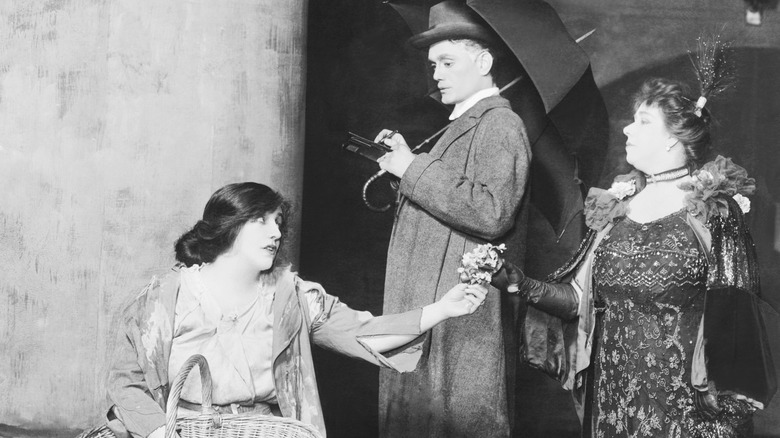The Greek Myth That My Fair Lady Was Based On
"My Fair Lady" is a beloved musical and movie about a Cockney woman learning to ditch her streetwise ways and thick working-class accent to pass as a proper lady, and the romances and conflicts that follow. One might be forgiven if they didn't find it immediately clear that the story can be traced back all the way to ancient Greek mythology (via TPAC).
"My Fair Lady" is based on a 1912 play by famous writer George Bernard Shaw, titled "Pygmalion." Though sharing a name with the ancient myth the play is based on, Shaw's version is a modernized retelling of the myth, focusing on Eliza Doolittle, an impoverished, streetwise flower seller, and Henry Higgins, a distinguished, misogynistic linguist and phoneticist. Several previous attempts to adapt the play into a musical failed, but the pair of Alan Jay Lerner and Frederick Loewe were able to find ways to add romance and expand the world of the story to create the musical they wanted. But where does the Greek mythology come in?
Pygmalion was a sculptor
According to Greek Mythology, the original myth didn't concern a linguist or a flower seller, but a sculptor. Pygmalion was a talented sculptor who hailed from Cyprus and had lost interest in women, seeing them as flawed creatures, and decided to devote himself entirely to his work. When he created Galatea, a beautiful ivory sculpture of a woman, Pygmalion carved it with such affection and skill that he eventually fell in love with his own work. Aphrodite, goddess of love, took pity on the sculptor and gave Galatea life.
Shaw's play, while wildly different in setting and plot, carries many of the same themes of the ancient myth. Higgins, like Pygmalion, sees women as inferior to men, particularly the impoverished Eliza with her undignified accent. It's only when Higgins begins to "work" on Eliza, spending time with her while imparting his art of phonetics, that he begins to see the beauty within as Eliza is "given life" in a way; however, Shaw's play has Eliza and Higgins ending their relationship on a very sour note, while "My Fair Lady" follows the myth more closely. Just as Pygmalion and Galatea get their happily ever after, so too does the musical pairing of Eliza and Higgins.

